Hans Weilenmann's CDC & Elk is a fly as good as they come. Still a lot of people - including Hans himself and the author of this article - have made variations. The article covers a whole bunch of CDC & Elk variations.
People who have fished with the Dutch fly tying wizard Hans Weilenmann will undoubtedly have met the CDC & Elk. This is Hans' signature fly and probably his all time favorite fly. It's also a fly, which a lot of anglers have learned to love, including myself.
My introduction to the fly
I was originally introduced the CDC & Elk dry fly by Hans himself. We had met a few times, and I had fished some of his flies and tied some of my own, and at one point he sent me a mail with a short write-up he had done on the history of the fly. This wound up as an article on my original web site Fishing Denmark, and has since moved with us on to the Global FlyFisher where you will still find it. It dates back to 1996, only a few years after Hans had tied the first versions of his now famous fly.
Advantages
I probably don't need to emphasize the advantages of this fly, but I will do so anyhow in a very short, annotated list:
- few materials (three actually, thread, CDC feather, deer hair)
- easy to tie (few tying steps and few turns of thread)
- durable (fish can trash it, though!)
- floats like a cork (both the materials are willing floaters, and floatant can add to that)
- good imitation (mainly of caddis, but probably does look like a lot of other things to a fish)
In every way a true classic, and this article is my tribute to the fly and its originator.
The original
The CDC & Elk is Hans' signature fly, and is generally acknowledged as a modern classic in dry flies. It has probably been spread and used as much as any of the really popular dry fly patterns.
Hans has a large section on the fly on his own web site with the history, a tying sequence, a video and much more.
Improving the best
Of course there is always a reason to try to improve on the best, and many people have taken Hans' fly to - if not higher levels - then at least other levels. Well, Hans himself has actually made several variations of his own original fly, and I have included those too in the list below where I try to sum up the many variations in the CDC & Elk family.
Hans has a video showing how he ties the fly on his site, and we have added Hans Tying the fly himself as well as Tying the CDC & Elk from Tightlines to our video channel.
Minor variationsColor variations (Sasa Stosic) Really major variations!CDC & Elk Streamer (Hans Weilenmann) |
Major variationsKicking CDC & Elk (Dave Wiltshire) |
Color variations
Sasa Stosic
The first and most obvious way of changing the pattern is by using the same materials but different colors. You can both vary the color of the CDC and the elk hair, which are both available in a large number of colors - CDC probably being more widely available in many colors.
You can choose to vary within a natural spectrum, but with the many bright colors at your disposal nowadays, pink, red and blue variations should be within reach. Most color variations seem to be a little more subdued, though.
To the right you see four examples of such variations tied by Sasa Stosic and published in Hatches Magazine. Below you see a whole bunch of Sasa's color variations. You can see the materials by clicking on each picture.
You can find out more about Sasa Stosic on the web site Musicarenje.com that he cofounded and and get your hands on the many beautiful colors of CDC on the site Swiss CDC.
|
|
|
|
|
|
|
|
|
|
CDC and Elk Pearl
Hans Weilenmann
The latest newcomer to the family added by Hans himself. Tied very much like the original but with a tag or abdomen made from flash wound directly on the hook, giving a translucent shine to the rear part of the fly.
CDC & Grizz
Hans Weilenmann
A variation, albeit one that breaks with the CDC & Elk concept by using bear hair in stead of elk for the wing, but then again leans so much up this fly that it can hardly be considered as anything else than a variation.
Green Butt CDC & Elk
Hans Weilenmann
A variation with a small, green ball of rabbit dubbing to create a green butt on the fly imitating the often quite bright eggs that the females deposit. The wing is slightly sparser than on the original, but the fly is essentially tied the same way.
The fly can be seen on Hans' web site
CDC and Elk Egg-Laying Caddis
Byron Haugh
Byron Haugh remarks that many caddis hatches are actually egg laying female caddis diving for the surface, and has tied a fly especially for that. As he notes, many of the flies even dive to the bottom or at least into the water to release their bright egg sacks, and fish will key in on these egg-laying insects. You can read more on Byron's own web site and see many more of Byron's flies on Hans' site.
CDC & Elk a la Hans Weilenmann
Terje Refsahl
Terje uses a dubbing mix with CDC-fibers mixed in, in stead of Hans' simple pure CDC-body. Apart from that the fly is very much "a la Hans Weilenmann".
You can see Terje's variation discussed here and see more of his flies on Hans Weilemann's site.
CDC & Elk (variation)
Byron Haugh
A smaller version of the original tied using a dubbing loop for the CDC fibers, allowing you to minimize the bulk of the feather and use feather, which are not perfect for wrapping.
You can see more of Byron's flies on Hans Weilemann's site.
Kicking CDC & Elk
Dave Wiltshire
Dave Wiltshire from Bristol in the UK has this interesting CDC & Elk variation on his home page. By adding rubber legs he gets a fly with a kicking motion, hence the name. He calls the pattern an addition to the 'experimental' fly box.
As Dave writes on his web site: "Not for the purists, perhaps. However, it'll be alot of fun trying them out". In an email he notes:
I have used it and it has taken fish for me - it works well skated in the evenings too.
D.
CDC & Elk Emerger
Hans Weilenmann
Well, it's an emerger version of the CDC & Elk and one of the variations, which closely resembles the original. It's tied with a smaller wing, a more upright profile and a very slim body.
Emerging CDC & Elk Caddis
Sasa Stosic
Sasa is a very active and innovative fly-tyer from Serbia and he came up with this emerger variation in 2013. The shuck and the bent hook makes it different than the original, but the basic pattern and tying method is the same.
CDC & Elk Spent
Hans Weilenmann
The CDC & Elk as a spent spinner, tied with the deer hair reversed and split into the two spread out wings that characterize the spent spinners.
You can read more about this variation on Hans' site.
CDC & Elk Spinner
Fran Friesen
Like the CDC & Elk Spent this is another spent spinner variation with the typical flat, spread out wings. This fly is originated by Canadian Fran Friesen and is tied with the elk hair in the same direction as the original. The hair is then separated and spread out. Fran even added a tail and bit of flash as an eye catcher to the fly.
See more on Fran's fly on Hans' web page
Crippled CDC & Elk
Bruce Salzburg
This is another CDC & Elk with a reversed wing - Quigley Cripple style - originated by Bruce Salzburg. The wing will stand upright in the water and the body will be under.
There's more about the fly on Peter Frailey's web site.
You can see more about this version on Hans' site.
Reversed CDC & Elk
Morne Bayman
Also tied with the wing reversed, like the Funnel Duns or Deveaux flies as it's seen in The Black Funnel here on GFF - and as seen on Salzburg's fly above. Coming from South Africa. The originator notes: This is a easy 2 minute fly that only uses two materials and works quite well.
The fly is covered on The African Fly Angler web site.
Morne writes:
If I remember correctly I was was looking for a fly that imitates an emerging/hatching midge at the time after I saw this and the reversed CDC and elk seemed to do the trick.
Diving CDC & Elk
Hans Weilenmann
Developed from an original idea by Mark McMillan from Colorado in the US who added a bead the the CDC & Elk, Hans took the idea a step further and created his own version of this fly. Some female caddises actually dive to the bottom to lay their eggs, and this fly does exactly that: dive. Hans has a detailed description and a step-by-step tying sequience on his web site. Hans has also made a video showing how to tie this fly.
Teardrop Diving CDC & Elk
Charles "Chip" Drozenski
Another beaded diving version of the fly. This one uses a slightly larger number of materials than the average variation, but is still quite true to the original. Chip notes that the main difference to Hans' own Diving CDC & Elk is the inclusion of a teardrop shuck, but of course there is also a shiny bead (brass or copper) and the ostrich collar, which sets it apart from Hans' version of this fly.
Cranefly CDC & Elk
Phil Holding
Craneflies or Daddy Longlegs as the British call them are terrestrial insects, but much favored by anglers - and fish! Falling on any surface they are a tasty morsel to any hungry fish.
And it only takes a few legs - six to be precise - to turn a caddis into a cranefly.
Pennsylvania Cricket
Richard Ross
Tied slightly larger and darker than the original, but in other ways identical, this fly will very well imitate a cricket, but most likely do well as an imitation of other terrestrials as well as larger and darker hatching insects - including caddises as the original.
Richard writes in a short note:
-Richard
CDC No Elk
Bill Willmert
This is going the absolute opposite way of patterns on this page: simplifying to the extreme. The three material fly is here a two material fly: thread and CDC. The CDC & Nothing so to say or the CDC No Elk as Bill Wilmert has called it. The flies in the pictures have the word Flash attached to their names because they have a bit of flash incorporated under the front of the CDC feather.
See more of Bill Willmert's patterns on Hans' web site.
Foamhead CDC & Elk
Martin Joergensen
My own meager attempt to do this fly one better has been the Foamhead CDC & Elk. Here is the story of that fly:
I only rarely fish dry flies, and one of my problems is that I cannot see the fly on the water.
Dutch Bas Verschoor introduced me to Austrian Roman Moser's Baloonhead Caddis, which is essentially an Elk Hair Caddis with yellow foam for a head. This bright, visible, yellow fly suited me perfectly. It was sooo easy to see on the water thanks to the foam over the head. And the foam didn't seem to bother the fish.
I took this concept and transferred it to the CDC & Elk. It worked the first time I tried it and didn't make the fly much more difficult to tie. And I got my visible fly. I have used this fly many times since, and nowadays I usually tie a bunch of my CDC & Elk's with a bright, yellow foam head.
Of course I named it The Foamhead CDC & Elk.
CDC & Elk Loop Wing
Sasa Stosic
Another variation by Sasa Stosic - this time with a loop wing under the elk hair wing.
CDC & Elk Streamer
Hans Weilenmann
This fly is also sometimes referred to as the CDC & Elk Wet. The wet is a more compact fly and the streamer more elongated. Streamer or Wet, both names describe quite well what it is: a sub surface version of the original. It's usually tied much larger than the dry fly. For a true streamer version, you can use a 3X long hook.
More about the fly on Hans' web site.
CDC & Elk Sculpin
Hans Weilenmann
Another streamer/wet fly variation of the fly, tied on a larger hook, although hardly as large as many would tie a sculpin imitation. The fly has a hair wing as well as a dubbed head, but still has the two main materials the CDC feather and the elk hair as some of its main components and uses them almost as on the original.
About the fly on Hans' own web page
BOM "Big Ol' Mouthful" CDC & Elk
Roy Christie
Roy Christie's variation is indeed a big mouthful compared to the original. It's somewhat more complex, using more materials, but still carries the legacy and clearly shows the CDC & Elk traits.
Roy writes in an email:
I wanted an emerger so I installed tails of pheasant tail fibres on the bend of the hook to represent those.
The Danica in my river had a claret shuck which I represented wth pheasant tail fibres, seal's fur or hare's ear.
I see the essence of the CDC & Elk as simplistic but my additions were to mimic target points of the natural so I excuse myself those.
The body of my BOM sits through the surface and hangs on the front hackle of CDC wth the wing mimicking the wing of the natural.
You will see that the body is virtually bare of CDC filaments and that the front hackle should be dense and fluffy to get the correct set of the fly with adequate support.
Blue dun dyed deerhair is good for the wing, any dark deerhair will suffice.
I checked the design in a glass of water and worked out that in its mirror reflection the body reflected up below the wing and gave me a fair impression of the dun or spinner.
I then calculated that I could enhance this with the addition of long tails so that my emerger would take on some extra characteristics.
However I had already installed the tails of the nymphal shuck and if I had to add another set they might destroy the potential for hookups.
I then tried various designs that would allow the addition of tails, the latest and best being a half dozen moose mane hairs set below the wing.
In this position they mimic the tails of the natural quite well when viewed from below at virtually any angle as in the mirror reflection they appear to meld with those nymphal shuck tails.
This fly thus represents the nymph in eclosion, a crippled dun or spinner or an adult, depending on the angle it is viewed from.
It has given me a few good fish, tied in various shades of yellow through olive to white and grey.
It is difficult to measure how good it really is as the trout eat anything that looks remotely like Danica when they are well on the feed; in more difficult situations it has worked well to date.
Bonefish CDC & Elk
Paul Slaney
Paul Slaney's Bonefish CDC & Elk might sound like a surprising variation of a caddis fly, but it has proven itself to be quite effective. The combination of elk hair and CDC makes good sense in a bonefish fly since the materials make a fly that can land softly, ride hook point up and of course display the character of the CDC with its mobility and air catching ability seems to be beneficial to almost any kind of fly.
Paul's variation in this picture has both long stalked monofilament eyes and some flash in the material's list while my own variation of the variation has bead chain eyes on top of the hook shank, but no flash and has been used for sea trout with success, and will easily do as a bonefish fly.too.
Paul writes:
I stumbled across the CDC n'elk after an online chat with Hans many moons ago and after fishing with him a few times I became convinced of it's effectiveness as a general dry fly. Then, later on, I saw it fished as a streamer at Oostvornse Meer in Holland on a large longshank hook with equal success on those big bow's.
It's adaptation to the flats came after a session tying Bonefish Bitters, where frankly, it's a pain to mess about with epoxy. I hate the stuff. So my 'bitters' patterns quickly had the wing added minus the epoxy head. From there it was easy, swap the Z-lon for CDC and...
Tied on a size 8 hook, upsidedown with with small bead chain eyes and a couple of strands of crystalflash as a tail. They work very well tied with yellow CDC and Deer Hair the same colour as Hans' original. I've caught on them in the Bahamas and the Caymans.
The photo was taken a while ago, the mono eyes were an experiment that didn't work very well. These days I tie'em as described above.
Paul
Seatrout CDC & Elk (Bonefish CDC & Elk for sea trout)
Martin Joergensen
This is my own version of the fly that Paul originated, which was actually tied just based on hearing of Paul's fly and never having seen one. As a result the fly is actually closer to Hans' dry than to Paul's current saltwater fly. I cover the hook shank with a large CDC feather and tie the fly like the dry, just upside down. This fly has worked very well for sea trout, and will most likely do well for bones too.
It has its own article here: Sea Trout CDC&Elk.
Egg Sucking CDC&Elk
Martin Westbeek
This is indeed an exotic variation of a dry fly, and the originator, Martin Westbeek explains how it came about, more as a joke than as a "real" fly.
Martin wrote me an email about the fly years ago:
I thought it up and tied it at the occasion of a fly swap (my CDC fly swap a few years ago). The idea was to get the participants to send in their flies in time, so I promised two prizes: the Early Bird award (a BWO and a Minky Muddler -- you may recognize the latter one from the Fly Meister competition) and the Straggler award for the tier who would be the last to send his flies in. The Early Bird award had to be nice flies, but for the Straggler award I needed a particularly offensive looking fly, and I came up with this one.
It's a TMC 5262 #12, tan thread, natural grey CDC, and a wing of bleached early season Elk. The egg is hot melt glue painted orange with glass paint.
So the fly started out as a joke, actually. If you'd like to use it you're welcome to do so of course, along with my name -- if it appears to be a killer fly I'd like to get some credits ;-)
Best regards,
Martin
You can see this fly and more on Martin's own site.
CDC&Elk Spey
(Stu Farnham)
I couldn't find any references to this rumored fly by Stu, and there was a good reason. It didn't exist! I wrote Stu and he replied:
Hmmm, I don't know where that rumor got started, I've not even thought about a CDC&Elk spey... but now you have me thinking!
I wrote:
Well, if you decide on giving it a try, let me know. I'd be happy to publish it as a sideline to the CDC&Elk story. I will probably mention the story anyway.
Stu replied:
OK, Martin... that'll be a challenge!
This was back in 2004, and as a PS: It was Hans himself that started the rumor.
Commercial
A lot of shops and commercial tyers have of course taken up Hans' pattern and different adaptations of it. It's is widely used and considered as one of the best all-round dry fly patterns, so it's natural that we see it in the market.
In the commercial market, there's also a large number of derivatives, not as much in the name of inovation as in the name of confusion. Most of these flies seem to be bad adaptations of the original rather than variations as such, and only few have the proper name or quote Hans as the originator.
You can still buy the fly in a version that is pretty close to Hans' own.
Cudafly in the UK has one, and so do other shops.
Some shops have flies, which vary the pattern in different ways. Troutlure's hallmark flies are "inline" flies, meant to fish the New Zealand way, where the dry fly acts as an indicator, but their flies have an eye for attaching the nymph rather than tying it to the hook bend of the dry.
The pattern from Orvis, which is exactly like the original, has been named differently, and is now the Low Rider CDC & Elk Caddis.
Past and future
The research for this article was started many years ago. The oldest notes and mails I have are from 2004, and since then a number of new variations have seen the light of day. With the popularity of the original as well as some of the existing variations, there's bound to come new variations, and variations of those. That's the fate of all good fly patterns -- they become a family of fly patterns rather than one single pattern.
If you yourself have a CDC & Elk variation, feel free to drop me a note and a picture, and I'll be happy to include it in the article. I can be reached on martin@globalflyfisher.com.
- Log in to post comments

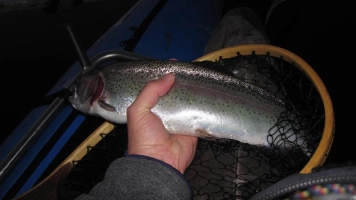



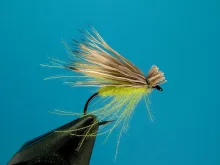
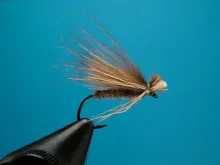
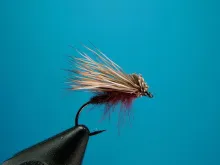
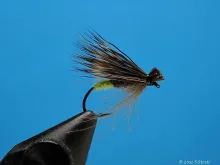
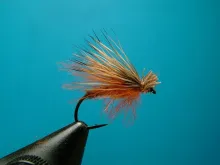
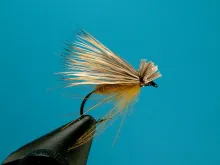



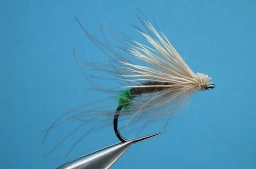
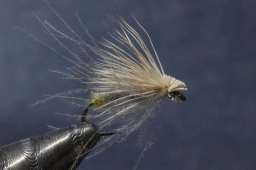
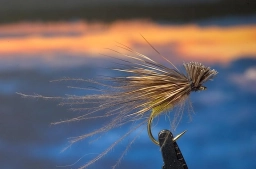

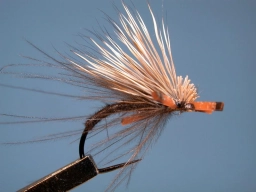
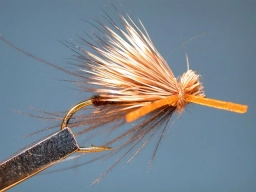
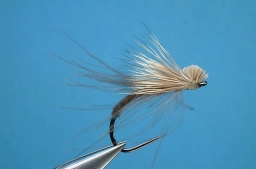
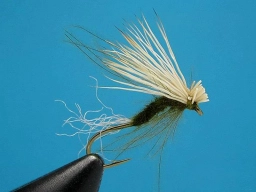
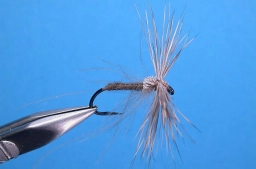


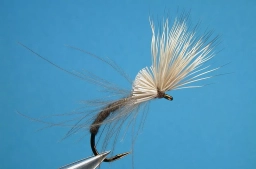
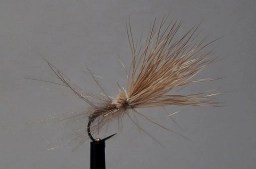
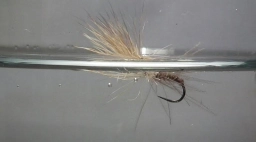
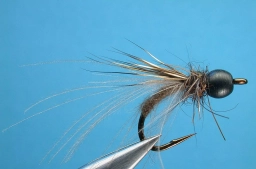
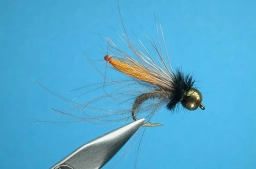

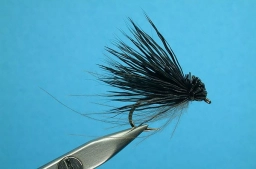
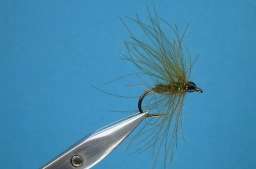



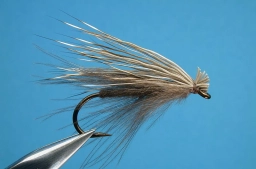

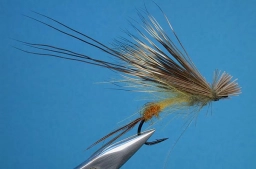

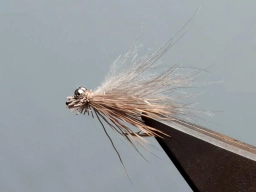


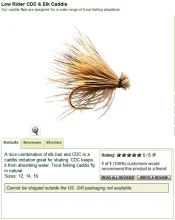
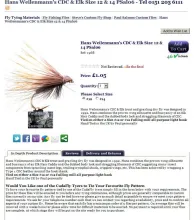
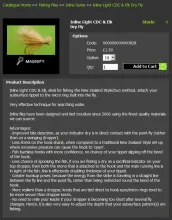

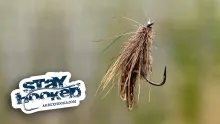
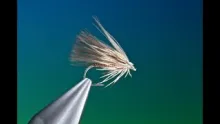


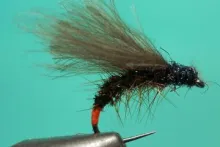


Martin Great article
Martin Great article !
thank you
The best dry fly for
The best dry fly for me!
I tie it with red but, cinnamon brown body, 2-3 wraps of Whiting hen and natural elk wing.
Hello Martin,
That
Hello Martin,
That was a well researched and finely done article! I am especially heartened to see little use of hackle as in the usual Al Troth Elk Hair Caddis. Now, let me present my favorite hands down caddis imitation. I use it mostly in std. size 16-20. Body of natural hares mask/ear blended with like color of Lafontaine style of sparkle yarn for luster and for the way it helps grab the thread while dubbing. Wing of elk, deer, or antelope. 8/0 uni thread to match dubbing, camel or tan most often. Simple and effective and very durable. It can be sunk as well or stripped in but I usually fish it dead drift. Now then however, your experience will have me experimenting with CDC to see if it helps in the waters I fish.
Thanks, Gregg
Amazing article Mart
Amazing article Martin.
You just can't go wrong with this pattern.
Jan,
The Seatrout
Jan,
The Seatrout CDC & Elk as it should rightfully be called (I actually added this name since my fly only remotely looks like Paul Slaney's Bonefish fly), is a generally useful seatrout fly that is well suited for shallow, clear and calm water. It lands gently and sinks slowly, but doesn't have much flash or color. It fishes upside down and can be fished on the bottom without too many snags, but I rarely do that.
Martin
Hi Martin,
thanks
Hi Martin,
thanks for that gorgeous summary. I got many good ideas whilst reading. When do you use your seatrout-version?
Jan